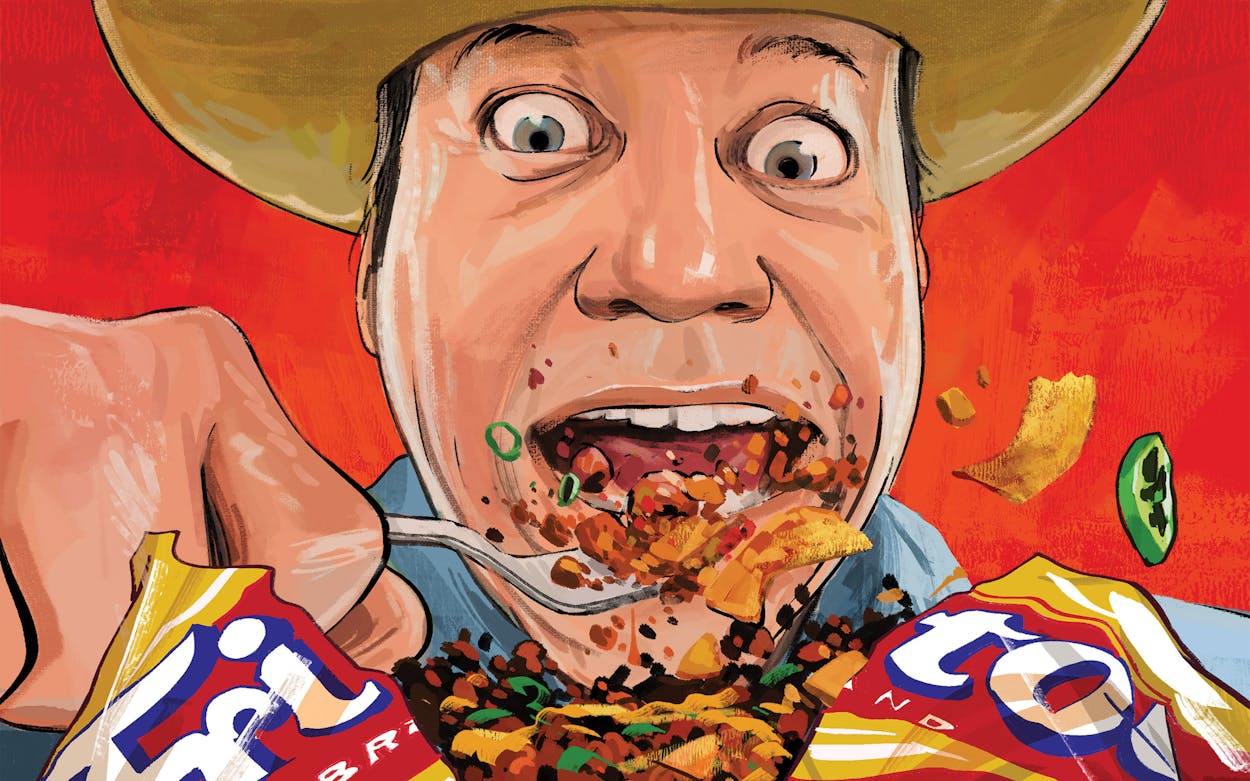Q: When I introduced my English husband to Frito pie, I was surprised to find him less than enthused. Could you explain the origins of this ingenious meal, and why Texans find it so tasty?
Mary Lowry, Austin
A: Ah, the Frito pie, a.k.a. the Frito chili pie, the chili Frito pie, the walking taco, the taco in a bag, the Frito boat, and the Texas straw hat. Whatever you call it, a bag of Fritos corn chips topped with a ladleful of spicy chili, a fistful of grated yellow cheese, a sprinkling of chopped onion and sliced or diced jalapeño, and sometimes even a dollop of sour cream is a dish near and dear to the Texanist’s timeworn old ticker.
Though we know that the Frito chip was invented in San Antonio and that the Frito company’s headquarters were established in Dallas soon after, the Frito pie’s exact origins are unclear. Some credit Teresa Hernandez, a lunch counter employee at the Santa Fe, New Mexico, Woolworths, with having invented the dish in the sixties. But this claim is unsupportable, given that Frito employee Nell Morris helped develop a “Cooking with Fritos” promotional campaign in the fifties that featured a Frito pie recipe. And then there was Mary Livingston, the executive secretary to Frito founder Charles Elmer “C. E.” Doolin, who is said to have invented the dish in the forties or thereabouts, and Daisy Dean Doolin, C. E.’s mother, who reportedly combined chili with Fritos in the thirties.
What’s not in dispute is that the Frito pie’s ingredients create a bludgeoningly bold symphony of savory splendiferousness that appeals to Texans’ piquancy-craving palates.
But Texans’ universal fondness for Frito pie is also inspired by the dish’s cultural significance here. After all, Frito pie has long been a mainstay at concerts, dances, football games, rodeos, tractor pulls, and the occasional Renaissance fair. (Even a scullery maid needs to get her spice on sometimes.) It’s also a popular item in public school cafeteria buffet lines—we Texans acquire our taste for it early on.
By contrast your husband, an Englishman, grew up with a much milder native cuisine. The Texanist recalls attending summer school in Oxford in the eighties and being served cucumber-and-butter sandwiches, which was at the time regarded as a toothsome lunch. English food has come a long way since then, but most of it still fails to approach the spicy and flavorful delights to which Texans have long been accustomed. Hopefully as your beloved settles into Texas, his taste buds will become more acclimated to our ways.
In the meantime, for the sake of your marriage, the Texanist suggests being patient with the old boy, as he is likely going through some profound adjustments in his exotic new homeland. The Texanist would also advise that you express a little sympathy for your husband’s plight, lest he pen a letter to his own hometown advice columnist complaining of a spouse who doesn’t understand the mouthwatering appeal of jellied eels.
Bon appéfrito to you both!
Have a question for the Texanist? He’s always available here. Be sure to tell him where you’re from.
This article originally appeared in the May 2024 issue of Texas Monthly. Subscribe today.
- More About:
- The Texanist
- Tex-Mex








